By Christopher Miskimon
A regiment of Bavarian infantry advanced quietly in the dark, rising from its own trenches and moving toward the French lines across the desolate no-man’s-land in between. If the German troops could surprise their enemies and gain a foothold, they could break the wretched stalemate that paralyzed the Western Front during World War I. As they inched ever closer to the French position, many of the German infantrymen felt increasingly anxious, hoping they would not be discovered by the enemy while exposed and vulnerable in the open field. Such hopes were dashed when roving French searchlights pinpointed the German regiment. Nearby sat the means of their undoing—a battery of four cannons, each a Model 1897 French “75 gun” positioned a mile away but with a clear line of sight. With a direct view of the battlefield, the French battery could pour fire right into the massed German formation.
The battery commander gave the order for each gun to fire 30 rounds, and the crews obeyed as fast as they could service their guns. No-man’s- land became a hell of high explosives and shrapnel, quickly overwhelming the Germans’ ability to continue their attack. A cheer went up from the French lines as the attackers broke and retreated to the comparative safety of their trenches, but the 75s were not yet done. The four guns fired 80 more rounds into the fleeing Germans, completing the rout. The stalemate continued.
Making the Model 1897
The French Model 1897 75mm cannon was a quick-firing, accurate, and dependable artillery piece that became practically the quintessential Allied cannon in World War I. Initially produced under great secrecy, with details of its design jealously guarded by the French government, the soixante-quinze went on to have a long, worldwide history of service that lasted well into World War II. It was versatile enough to gain use as an antitank gun, although the tank did not even exist when the cannon was developed in the 1890s. Decades later, the French 75 was still firing shots in anger, continuing to serve in both artillery and antitank roles.
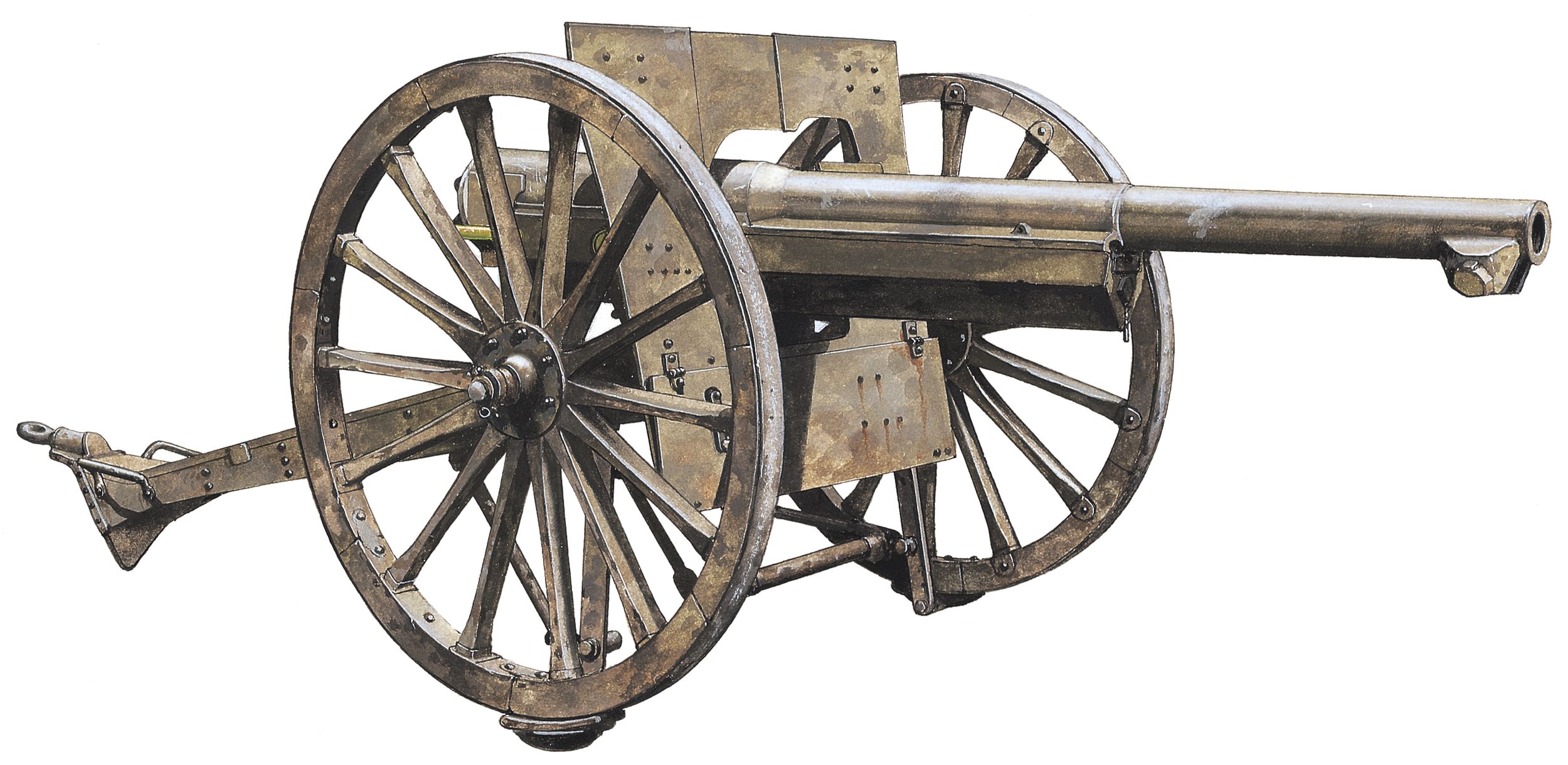
Development of the Model 1897 began as part of the ongoing artillery arms race in the late 1800s. Improvements in explosives and metallurgy made it possible create more powerful cannons than ever before, but one problem plagued designers—recoil. Field guns that were small and light enough for easy transport would literally fly off their wheels at each shot, requiring the gun to be set back into position and aimed again before the next round was fired. If the gun was heavy enough to soak up the recoil forces, it was no longer transportable by a reasonably sized horse team. Recoil-absorbing systems were created, but none of those in general use did the job well enough to solve the problem, and the cannons still jumped upon firing.
In 1892, General Charles Mathieu, the French artillery director, came into possession of a secret German report concerning a revolutionary new cannon that utilized a new “long-recoil” principle. The weapon had advanced to the trial stage but had failed during testing. Still, Mathieu’s curiosity was piqued. Summoning the director of the government arsenal at Bourges, Mathieu asked if such a design could be made to work. The director returned to his arsenal to discuss the design with other engineers and officers; they returned after three days of study, saying the weapon’s design was simply not feasible. Mathieu was disappointed but not yet ready to give up. He contacted the director of another arsenal in Pateaux, just outside Paris, the Chatillon-Commentry Gun Foundry. The director, Colonel Albert Deport, took the German gun’s particulars and studied them for three days. When he returned, he announced to Mathieu that such a gun could indeed be made.
Why the French 75 Gun Was Kept Such a Secret
Development began under the strictest secrecy. All correspondence was kept confidential, including the weekly reports Deport made to Mathieu. No contracts were signed, nor did Mathieu seek approval from his superiors. “Misdirected” money from a fund normally used to buy property around Paris paid for the program, to the eventual cost of 300 million francs. Deport’s specification called for a weapon of 75mm caliber, but the heart of the new weapon would be the recoil system. Beneath the gun’s barrel lay a cradle that held two hydraulic cylinders. The top cylinder held hydraulic fluid, while the bottom held compressed gas. A port connected the two cylinders and a floating piston kept the gas and liquid apart. When the gun fired, the fluid was forced down through the port into the second cylinder, compressing the gas until the recoil energy was expended, at which point the gas pushed against the floating piston and forced the fluid back into the first cylinder. This “counterrecoil” pushed the gun back into firing position, ready for the next shot. The system worked so smoothly that the gun essentially stayed in place after firing without jumping, eliminating the need to re-aim it before firing again. This increased the rate of fire dramatically.
Although the French were attempting to design a whole new class of cannon, they did not hesitate to adopt features from other guns they thought might work. The cannon’s breech assembly was of the Nordenfeldt type, a rotating block with a notch cut into one side. When rotated, the notch exposed the chamber so a round could be inserted, then the block was rotated back and closed. It was simple and reliable. The features of other guns were adapted as well. A decade earlier, another French officer had designed a 57mm gun with a number of new details. These included a separate sighting device not attached to the gun tube, which enabled the sight be moved independently of the barrel. They also adopted the concept of the collimator, a fixed telescope used for aiming the gun in direct fire. Additionally, gun shields for crew protection and a seat for the gunner were adapted to the new cannon. The seat was only really useful if the gun’s recoil was sufficiently managed by the new recoil system to keep the gun from jumping when fired. Otherwise, the gunner would be thrown off when the gun jumped.

Secrecy about the new 75 was maintained even after the cannon entered service with the French Army. The floating piston was of particular interest to those wanting to copy the gun’s design because of the way it was sealed to prevent the fluid and gas from mixing. This was such an important detail that French artillery officers were forbidden to have any knowledge of it—in fact, they were not allowed to see the piston itself when it was disassembled from the gun. Various regulations were put into place to assure the secrecy of the 75’s internal mechanism. Only certain maintenance functions could be performed at the battery level, and even these had to be carried out with an officer present. French technical journals obligingly refrained from writing about the new recoil system as well.
Fantastic Forays of Fire
In the end, all the efforts paid off. The Model 1897 set a whole new standard of artillery performance. In the hands of a highly trained gun crew, rates of fire as high as 30 rounds per minute were possible. This required great practice and precision in the reloading process, as the gun would scarcely have finished its recoil motion at a rate of one round per two seconds. Even so, a well-drilled Model 1897 crew could accomplish 10 to 20 rounds per minute without much trouble. The recoil system was so effective, it was said, that one could set a glass of water on the carriage’s wheel and it would not spill during firing. The gun itself, including its carriage, weighed just over 2,650 pounds. The tube was eight feet, three inches long, which equated to 33 calibers (the length of the tube divided by the diameter). Range of fire was up to four miles.
The firing capability proved both useful and deadly on the Western Front during World War I, where the Allies’ enemies had to fight their way through thick, hellish barrages of 75mm fire. At the war’s beginning in 1914, some 4,000 75mm cannons were in the French inventory; thousands more would be produced during the conflict.
A Reputation in War
As the war progressed, the Germans came to have a healthy respect for the 75. Even civilians gave testament to its power. After seeing a battery of 75s in action near Milhausen, France, one French citizen recalled observing a German artillery battery set up on high ground near a cemetery, posting their horses and limbers on some low ground nearby. As the man watched, a French battery of four 75s opened fire on the Germans and “demolished the material and killed almost all the cannoneers, directed its fire on the limbers posted in the bottom land and killed a great number of horses.”

When the Americans entered the war in 1917, there were severe shortages of all sorts of military equipment, including artillery. American factories were still gearing up, and could not provide guns quickly enough for the weapons-starved divisions going overseas. Luckily, the French could produce enough 75s to equip both armies as well as provide ammunition and training facilities for the arriving Americans, who took an immediate liking to their new cannon. The French soixante-quinze, in typical American fashion, was pronounced “saucy can,” and the doughboys of the American Expeditionary Force found it accurate and reliable. They adopted the French pattern of equipping their batteries with four guns each instead of six, since the 75’s rate of fire meant that a four-gun battery had the same firepower as a normal six-gun unit. By the time the first American 75s went into action on October 23, 1917, the AEF possessed some 270 Model 1897s, enough to equip at least 64 batteries.
The guns were quickly put to good use. In the St. Mihiel offensive, the American guns fired a barrage of one million rounds in just four hours. Half the 3,000 guns used were 75s, which fired two-thirds of all the ammunition expended in the offensive. By the war’s end, American 75s had fired more than six million rounds in all, mostly in conventional barrages to support attacks or defend against enemy assaults.
The needs of the war gave rise to some interesting and unconventional uses of the 75 as well. One American battalion used its guns individually, taking advantage of the 75’s high firing rate to dupe the Germans into thinking an entire battery was in action. It required an experienced gun crew, able to open the cannon’s breech when it was extended in full recoil, then load a fresh round into the chamber before the barrel returned to firing position. This would put four rounds on the target in only six seconds, equal to all the guns of a battery firing at once. These roaming sections would move frequently, towing the 75 behind a truck rather than the usual team of horses. This gave the gunners the mobility to make one gun do the work of several different batteries firing from different locations.
One American unit, Battery F of the 149th Field Artillery Battalion, part of the 42nd Infantry Division, came up with the so-called Pirate Gun. This cannon was used to support an attack with direct fire right on the front lines. The night before the assault, the gun was towed by its horse team as close as possible to the trenches, then manhandled to firing position by the gun crew and infantrymen. It was then carefully hidden from German view. When the preparatory barrage began, the gun stayed quiet, taking no part in the initial shelling. When the American infantrymen emerged from their trenches and advanced, they immediately came under heavy fire from a number of enemy machine guns. It was for just this situation that the 75 had been moved up. It now sprang into action. Firing over open sights, the crew picked the closest machine gun nest, only a few hundred yards away, and fired. The enemy machine gun was quickly knocked out of action and the gun crew moved on to the next one. Most of the nests were knocked out with just a single round, and soon all the German nests within a radius of 1,000 yards lay silent.
With the loss of their machine guns, the Germans retreated and the American attack succeeded. After nightfall the gun was again pushed forward, this time to fire on a farmhouse the enemy had occupied. This fortified position was holding up the advance, so the Pirate Gun was called up to destroy it. Waiting until dawn, the gun crew poured fire into the enemy-held building and leveled it. The 75 was credited with helping the attack succeed with far fewer casualties than usual.
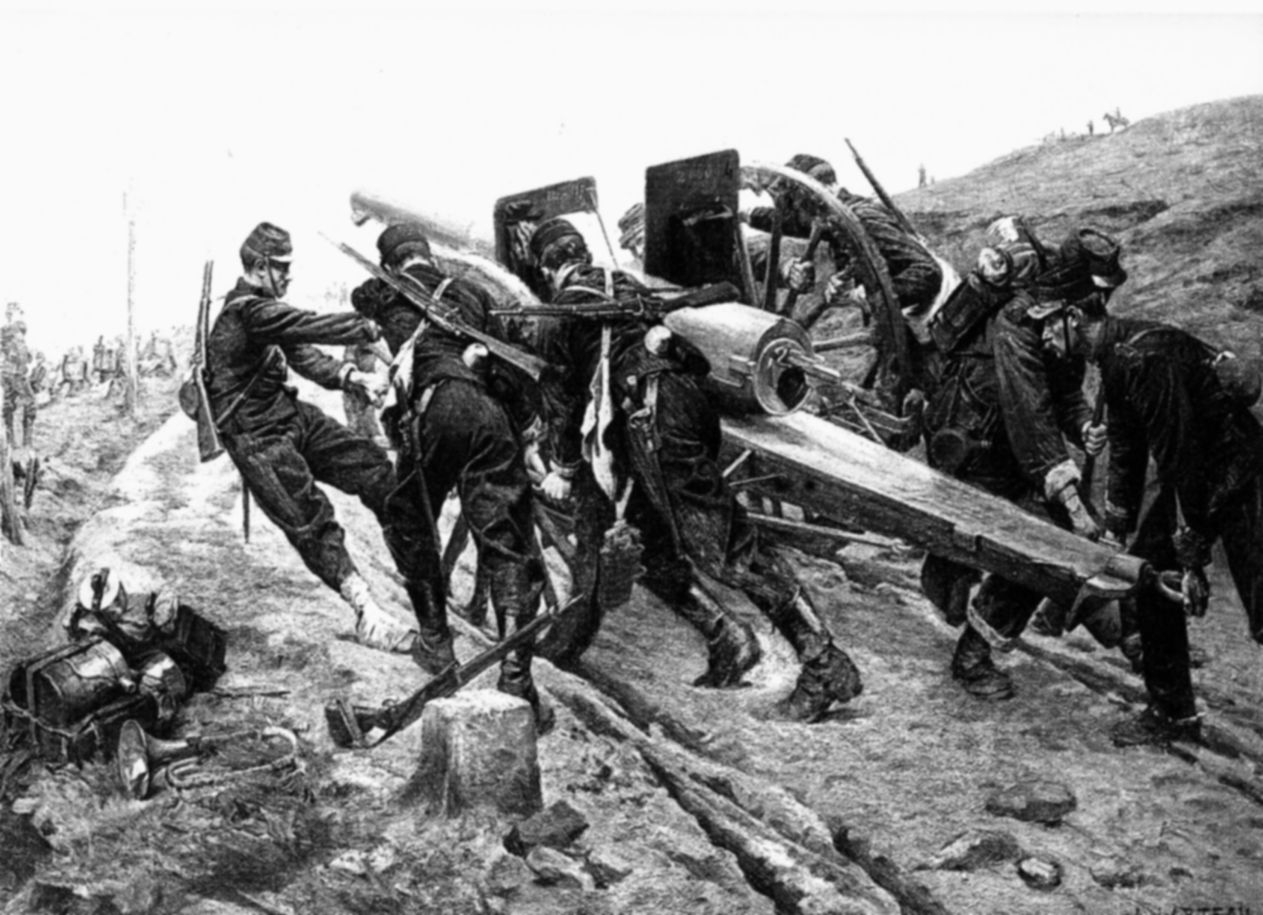
The Model 1897 in the Second World War
After the war, the Model 1897 soldiered on despite attempts to replace it with a newer design. In the U.S. Army, the postwar Westervelt Board recommended a new 75mm cannon that eventually would come to fruition as the M-1 pack howitzer. But in the spartan fiscal atmosphere of the 1920s and 1930s, the new weapon stayed in the experimental phase. Meanwhile, Model 1897s continued to serve because large numbers were still available or in storage.
During World War II, 75s once again fired shots in anger. Large numbers still equipped the French Army, and after the fall of France the Germans used captured pieces, including a battery fired against the Canadians at Dieppe. In the U.S. Army, although newer artillery pieces had started to finally come into service, 75s still found use. A crash program to develop a stopgap antitank gun mated the 75 to a M-3 halftrack chassis until dedicated tank destroyers were fielded. The M-61 armor-piercing round created for the gun could penetrate up to three inches of armor at 1,000 yards, quite respectable for the early years of the war. The design was hurried into service in the days just before Pearl Harbor, with a number being shipped to the Philippines. There they served as both artillery and tank destroyers with good effect during their first combat service. Some were captured and later used by the Japanese before American troops recaptured the islands—and the 75s—later in the war.
The 75s next saw action during the fighting in North Africa in late 1942 and early 1943. The 601st Tank Destroyer Battalion used them in the fighting around El Guettar in March 1943, knocking out 30 German tanks while sustaining the loss of 21 M-3s in the effort. Overall, the M-3 was deemed unsuccessful, largely because it was often used aggressively in direct support of attacking infantry, where its thin armor was a detriment. Quickly phased out of frontline service, some M-3s were transferred to the British Army, which used them as self-propelled artillery in the headquarters troops of tank squadrons for the remainder of the war.
In the Pacific, the Marine Corps used the 75s to better effect during various campaigns. The Marines used them in both the antitank role, where they proved quite effective against the thinly armored Japanese tanks, and in direct fire support roles, destroying enemy bunkers and fixed emplacements, although in this role the 75’s thin armor and open top exposed it to attack. The M-3 was replaced late in the war by the M-7 105mm self-propelled gun.
After World War II, the French 75 was quickly retired from most European armies, although some soldiered on in the Third World. Over its long service, the Model 1897 saw action in both of the great conflagrations of the 20th century. At its introduction, the 75 represented a huge leap ahead in artillery technology, heralding in a new era of fast-firing, deadly cannons. By 1945, the weapon had been eclipsed by new designs, but the 75 remains perhaps the quintessential Allied artillery piece of World War I. (Read more about the artillery and weapons that shaped the 20th century inside the pages of Military Heritage magazine.)
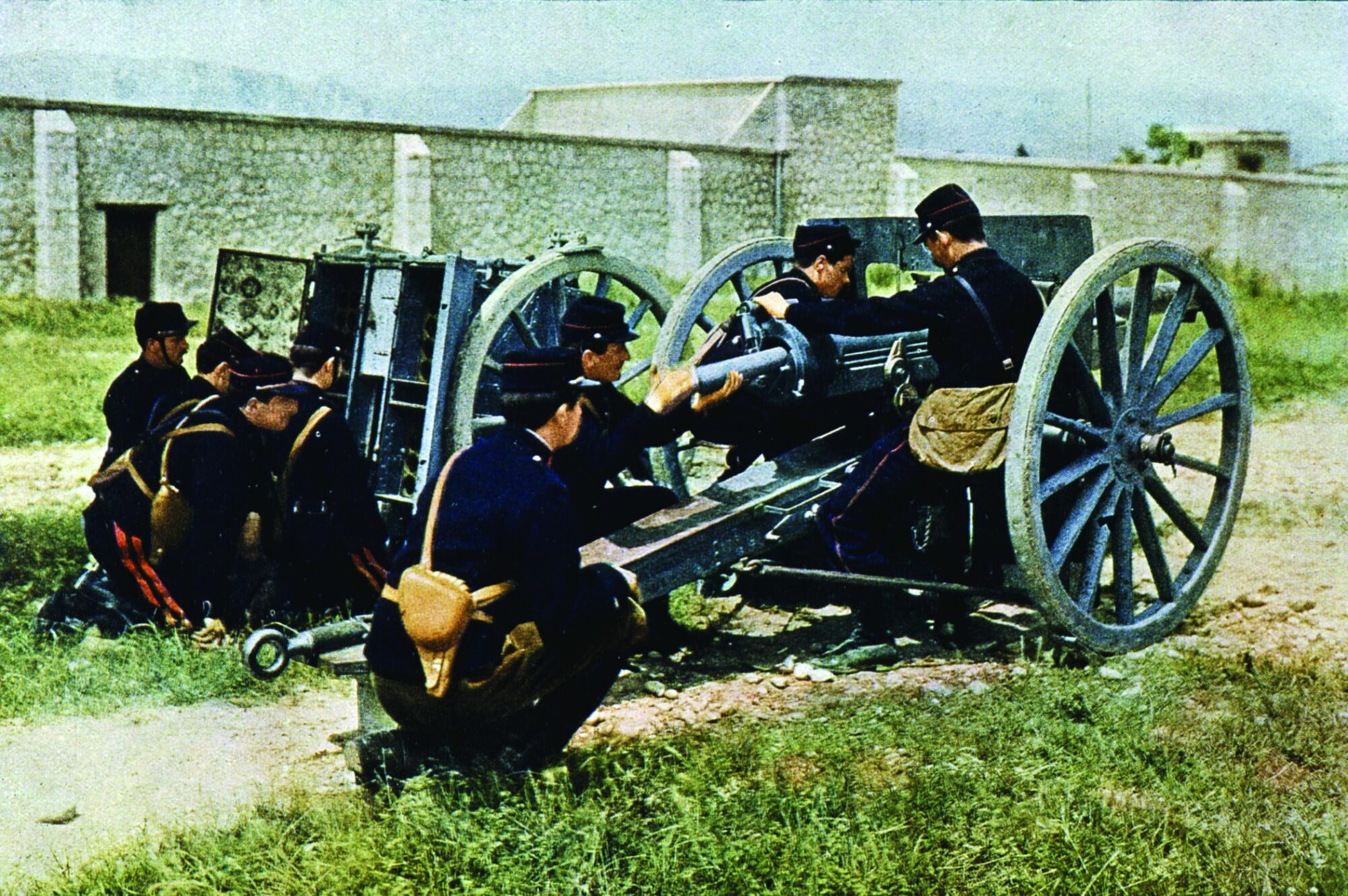
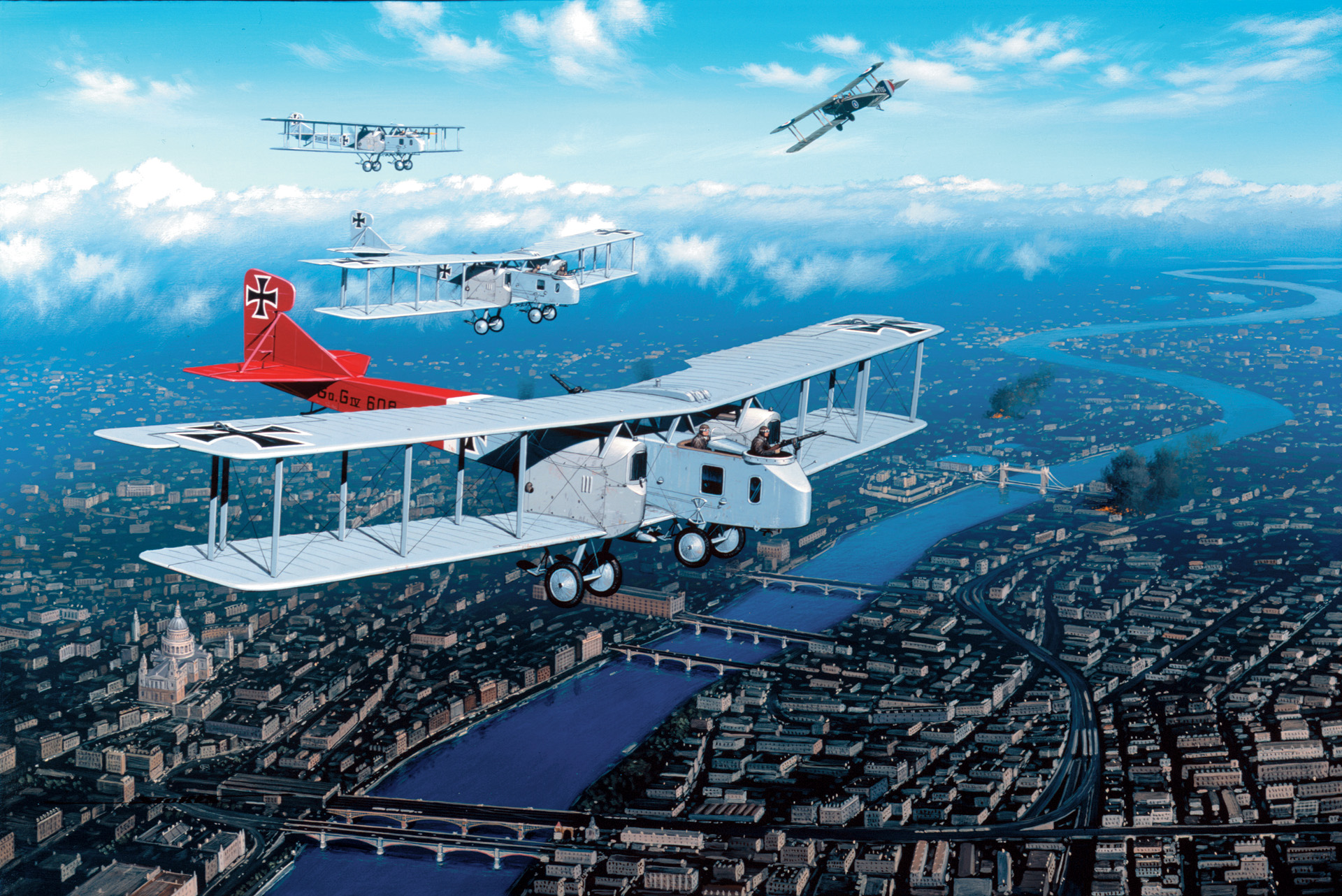
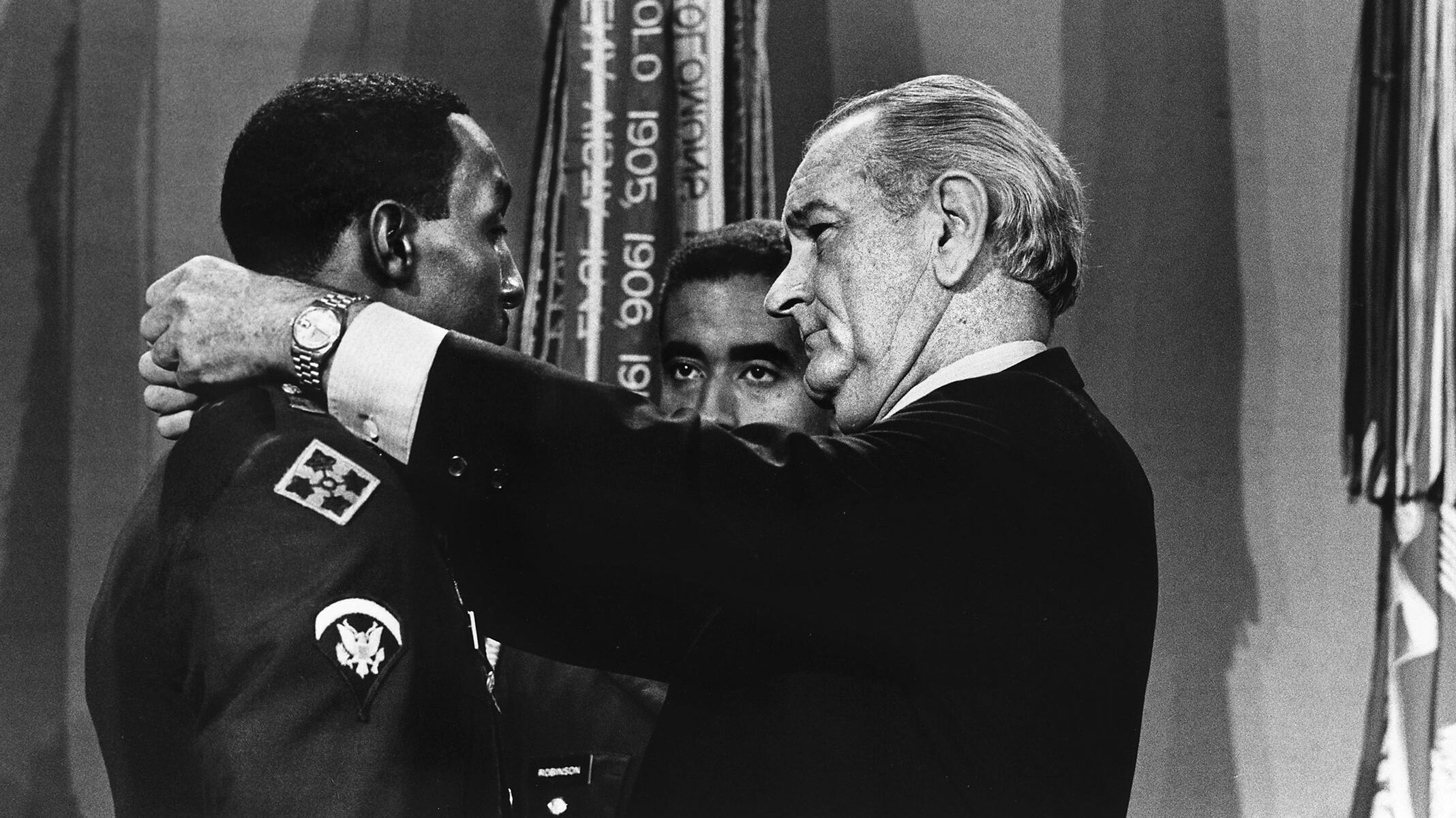
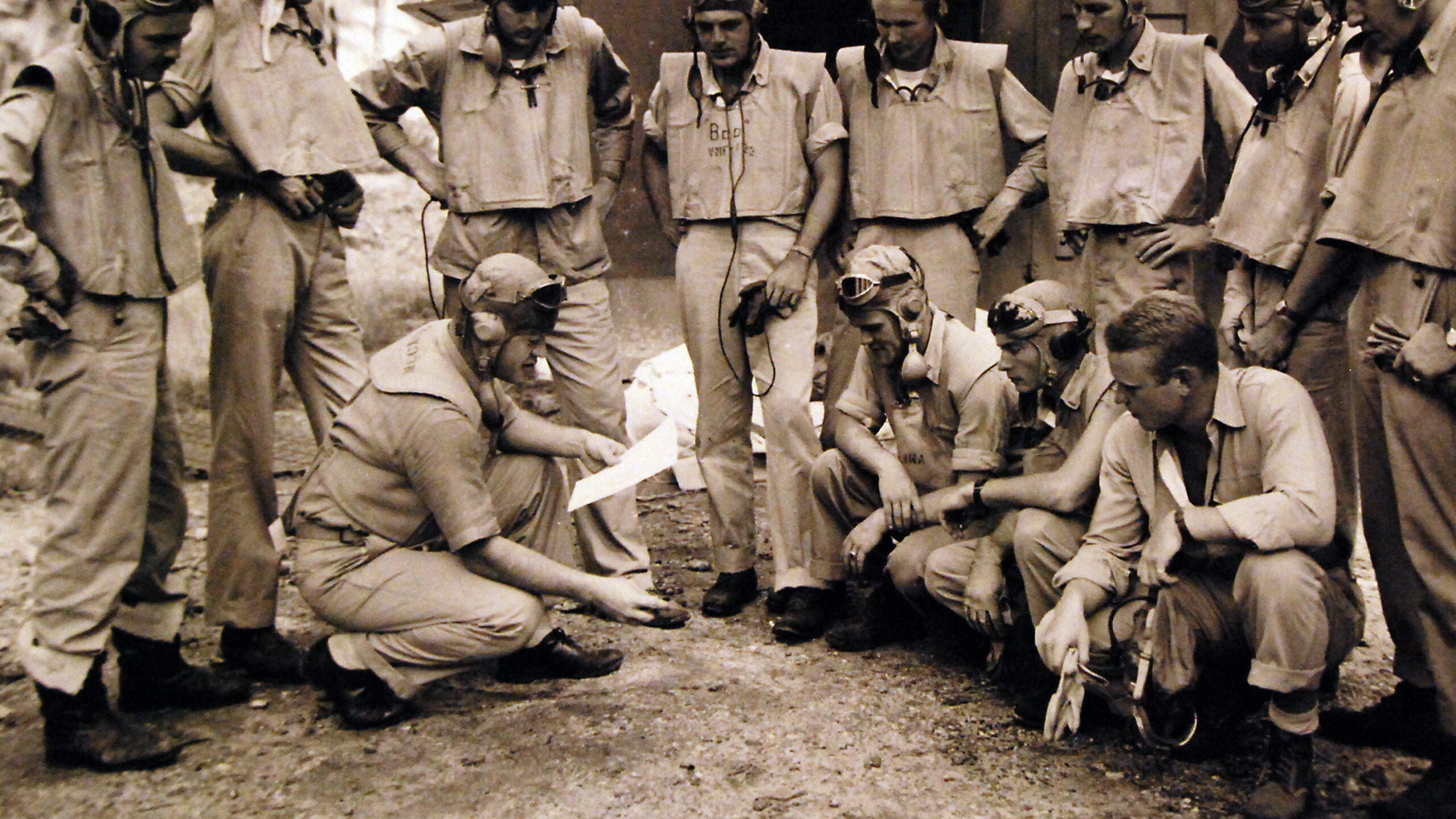
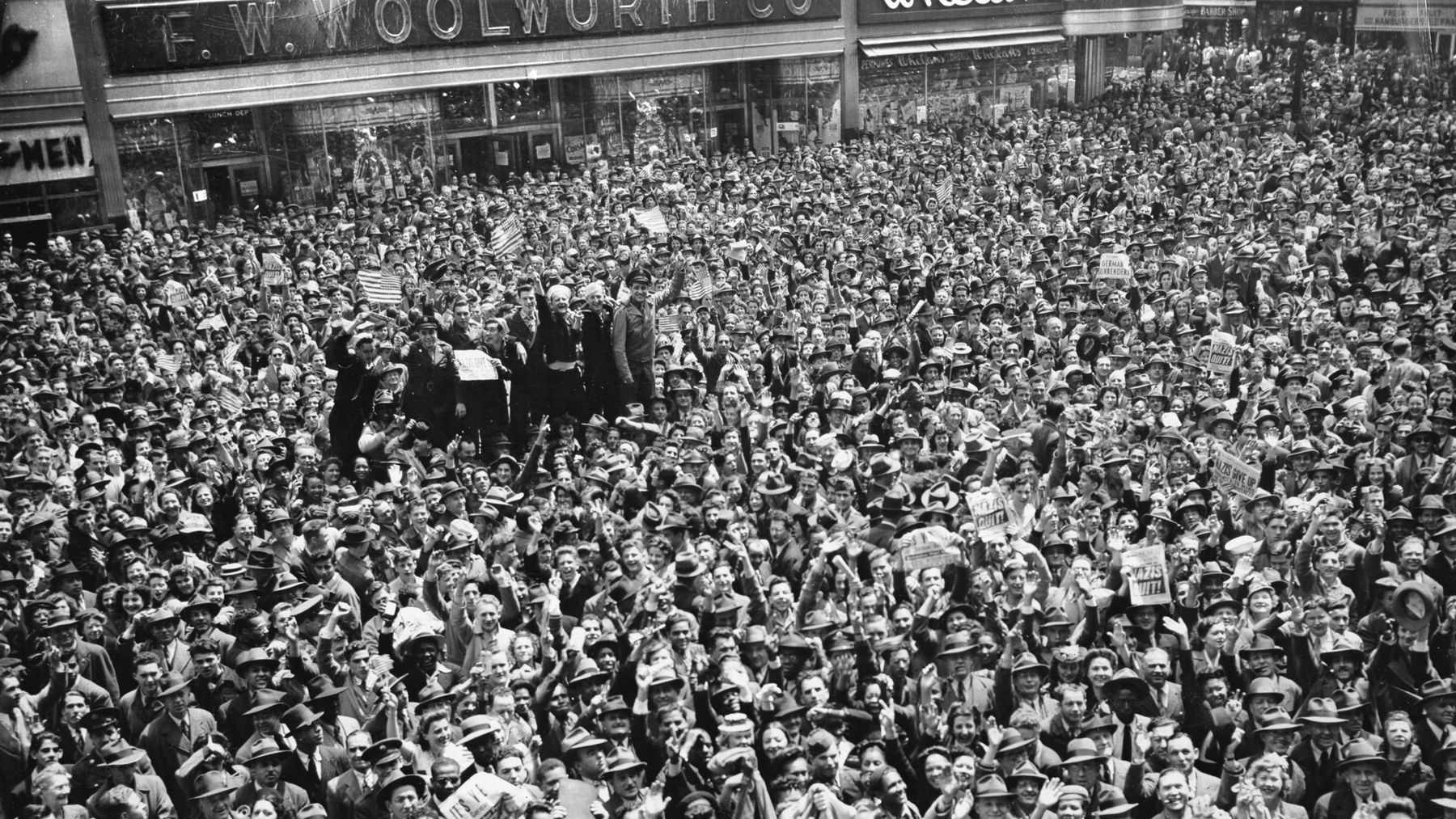
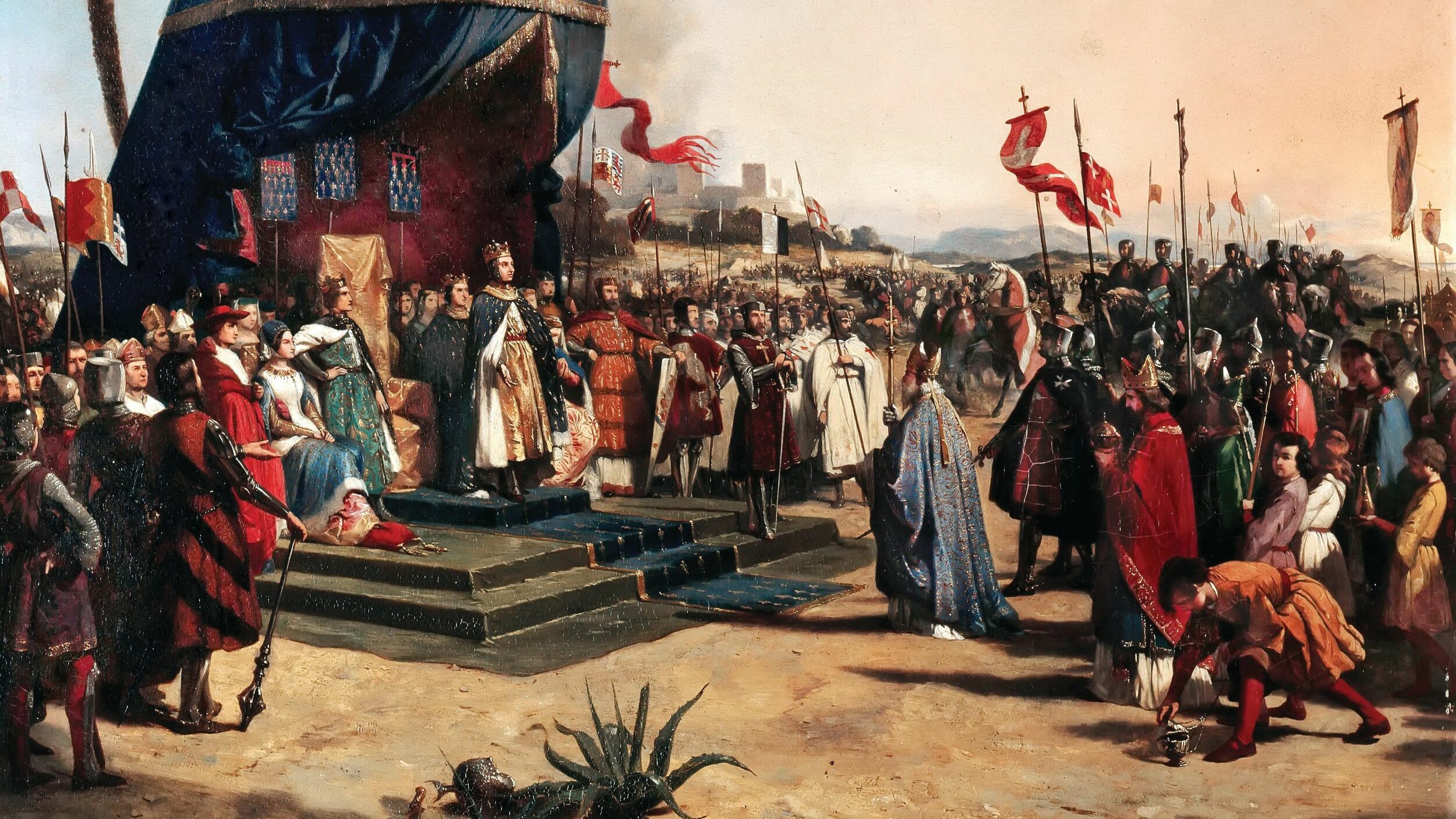

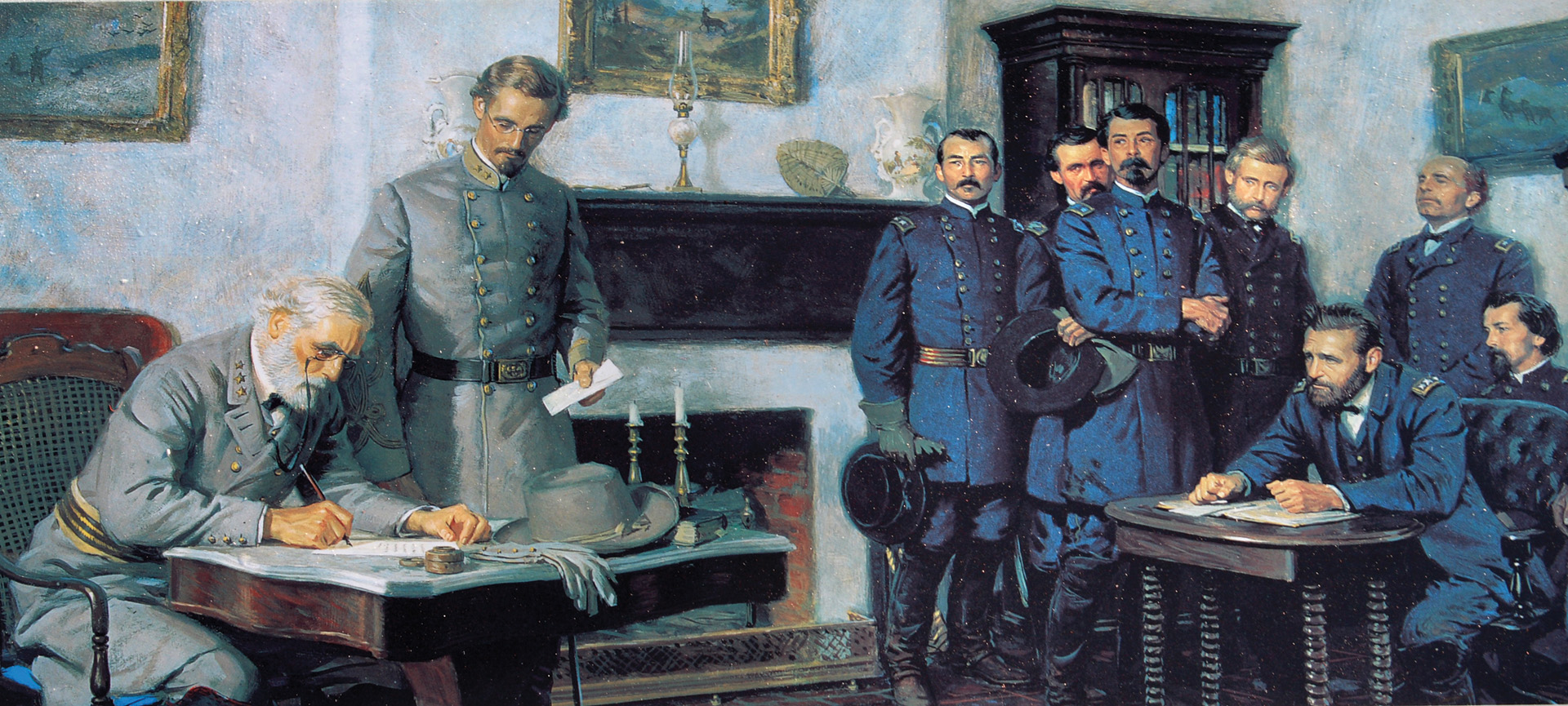

My father served in a French 75 battery, in the very battle pictured, St. Mihiel. He was in either the 12th or the 15th Field artillery Regiment, 2nd Infantry Division. He had 9 battle stars.This could well be his gun. He said the Americans were so good with this gun the French would stand around with their mouths hanging open. I believe it. He was not a braggart. He said it wasn’t unusual for his battery (four guns) to be the forward element in the line, with no infantry support, no one between them and the Germans. He also fought at Chateau Thierry, Meuse-Argonne, Soissons, Blanc Mont Ridge, Aisne-Marne, and others.
ah yes, the boasting of the Americans..After 4 years of war behind them, i highly doubt the french artillery mens had something to learn from the americans, and that, on their own weapons..
Thanks for posting that Gerald. My great uncle Clifford was killed at St.Mihiel- he was in a machine-gun battalion. Also my mother’s father Norbert was wounded at Meuse-Argonne, infantry.
A cocktail — the French 75 — was so-named because of its impact. Champagne, gin and lemon juice.